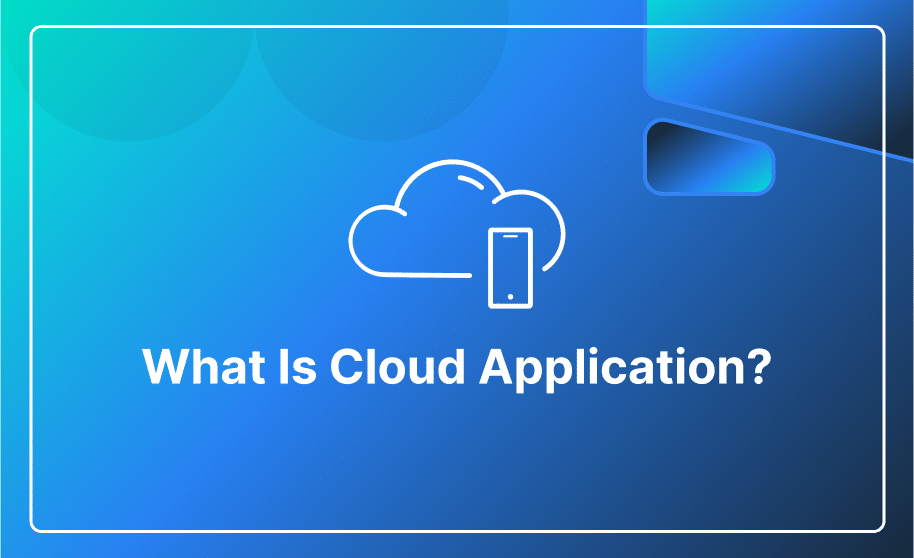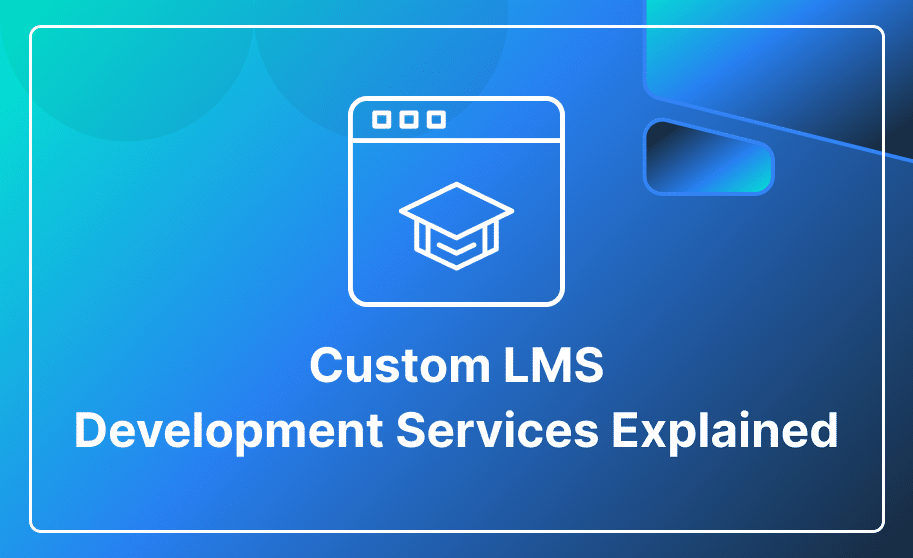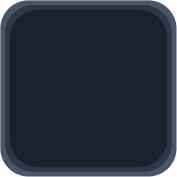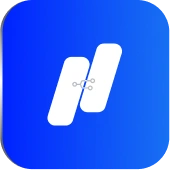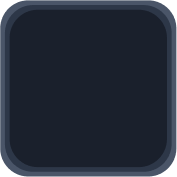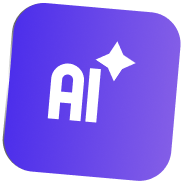Software development frameworks are important tools for developers. They provide a structure for creating software and ensure the code is written consistently and well-organized. In this blog, we will take a brief look at the top 54 development frameworks expected to be popular in 2024. Before that, we will provide insights into what a development framework is, its advantages and drawbacks, and how to choose the right framework for your projects.
What is a Software Development Framework?
A software development framework is an application, product, or system that offers a set of components. These components can be used across various applications to reduce the time and cost of developing an entire application. The framework often includes functionalities such as logging and authentication, which can be shared among multiple applications within a framework. Typically, frameworks are created to address specific types of problems and enhance the efficiency of the development process.
Frameworks are used to build desktop, mobile apps, or web-based applications. The type of framework you choose often depends on your programming language. Some notable development framework examples are Laravel for PHP, Django for Python, and Ruby on Rails for Ruby; each formwork has its own set of tools and documentation.
Mostly Frameworks help to write code for specific programming languages and follow well-defined structures or patterns that assist developers in creating and modifying applications with ease. A software development framework is also referred to as a web app development framework as it provides the necessary tools for building complex web applications like social media platforms, e-commerce stores, etc.
What is a framework in software?
A framework or software frameworks are a pre-established structure or set of tools that provide a foundation for developing software applications. It uses shared resources, like libraries, image files, and reference documents, into one package. This package is adaptable, allowing developers to customize it to the unique requirements of the project. With a software application framework, developers can add or replace certain features to give new functionality to the application. Software development frameworks usually include an architecture, a design approach, and a set of components such as utility classes and helpers. These frameworks also provide instructions on how to structure your code and how to use the components within the framework.

Pros of Using Framework
Software development frameworks bring various advantages to developers. Below are some key benefits:
- Easier Development and Maintenance:
Software development frameworks make it easy for developers to build and manage software applications. These frameworks offer a stable, well-defined structure for applications along with reusable code libraries that expedite the development process.
- Consistency and Compatibility:
Software development frameworks play a key role in standardizing software development across various organizations. This happens because these frameworks offer a common set of tools and procedures that developers can use, irrespective of their organization or project. Additionally, development frameworks show compatibility with different programming languages, which makes it easy for developers to switch between different projects without difficulty.
- Improved Security Measures:
Software development frameworks provide standardized tools and procedures to improve security in software applications, such as validating input data, establishing secure communication with other systems, and implementing access controls. They also help to prevent common vulnerabilities like SQL injection and cross-site scripting.
- Easier Team Collaboration:
Collaboration among developers on projects is made easier by software development frameworks. These frameworks offer common tools and procedures that all development teams can utilize. Moreover, many frameworks include version control support, which allows developers to track changes and collaborate more efficiently.
Advantages of Using Software Development
There are many benefits of using framework software. Some key advantages are:
Consistent Code:
Using the same connection string or configuration file every time ensures a consistent approach. It minimizes mistakes and saves time efficiently.
Code Reuse:
A key benefit of using frameworks is the ability to reuse code. It saves time as you don’t go back and rewrite the same code. For instance, if there is a function or class you are consistently using in multiple applications, incorporating it into Framework allows you to write the code just once.
Enhanced Productivity:
Frameworks help you get a good start in your development work, and they make it easier to write code that is accurate and easy to manage. This boosts your long-term productivity. However, it is important to understand that frameworks might only be the ideal option in some situations.

Disadvantages of Using Software Development
In addition, it’s essential to understand a few disadvantages before using a framework.
- Complex:
As the framework’s complexity increases, it becomes more difficult to use and learn.
- Lock-In:
Although frameworks save time and provide a solid foundation, they can limit your ability to use best practices or make changes to the code. Consequently, choosing the wrong framework for your project might be more expensive than not using one at all.
- Learning Curves:
Whenever you start using a new framework, there’s always a learning curve. If you are not careful you might find yourself spending more time to understand the framework than you would have spent creating your own code from scratch.
- Dependency on Third-Party Libraries:
Frameworks depend on external libraries to handle many tasks. If these libraries are not available or lack the latest features, it can put your project in trouble.
How to Choose the Right Development Framework?
In software development, there are numerous frameworks to choose from. Choosing the right one for your project can be tricky. Here’s a guide on what is a framework in programming language and how to choose a suitable software development framework:
Firstly, think about the language of the framework. If you don’t have a specific preference yet, you can choose from languages like Java, Python, or Ruby. Additionally, consider if the framework is open source. If it is, more people might use it, and the code could be updated more often. However, keep in mind that some features of an open-source framework might be hidden due to patents, and that might impact your decision.
Moreover, check if the framework has a strong community. This means there are many tutorials and knowledgeable people. If not, it might be difficult to find help during application development. Also, consider if the framework is mature and also the size of the community base. This means it has been around for a while, and people have had enough time to determine its quality.
To completely understand which application development process suits your chosen framework best, you can explore case studies or examine example applications. This provides insights into what to expect and how the framework works. If you’re unsure where to find these resources, you can visit the framework’s website or a repository dedicated to software development frameworks.
Ultimately, the most effective way to choose a software development framework is to give it a try yourself. This allows you to gain a deeper understanding of its functionality and assess whether it aligns with your project needs. If not, you have the flexibility to switch to another framework.
Check out our blog on the “Software Development Life Cycle (SDLC)” for valuable insights and information.
Top 54 Widely Used Software Development Frameworks
Here is a list of 54 popular software development frameworks that you should consider utilizing in 2024.
- Django (Phyton):
Python is a powerful and user-friendly programming language with an ecosystem of web frameworks that simplifies website development. Django is a widely used framework among developers due to its large library of extensions and its automatically generated administration panel that enables you to develop and deploy bug-free sites quickly. Moreover, Django is compatible with Google App Engine, making it easy to deploy applications to the cloud.
- Flask (Phyton):
Flask is a microframework for Python that allows you to create web applications easily. It relies on the Werkzeug and Jinja2 libraries and provides a simple API for routing, templating, and data storage. Flask is well-suited for small projects or prototypes and has a friendly and supportive community of developers always ready to assist.
- TurboGears (Phyton):
TurboGears is an open-source, rapid-development web framework. It seamlessly merges the Pylons/Pyramid framework with a Bootstrap-based skin to create a robust platform for bringing your next big idea to reality.
- PyTorch (Phyton):
PyTorch is a Python library known for two main features: performing tensor computations with strong GPU acceleration and building deep neural networks using a tape-based autoloop. It is widely used by prominent companies like Facebook, Twitter, Salesforce, Nvidia, Intel, Uber Technologies Inc., Nordstrom Inc., and Dropbox Inc.
- Ruby on Rails (Ruby):
If Python is not your preferred programming language, you could explore Ruby on Rails (RoR). Although it shares some similarities, RoR follows a slightly different design philosophy. The significant reason to choose RoR is its popularity, evident in its use to build the largest websites like Twitter, GitHub, and Hulu. Moreover, Ruby on Rails has a large community of developers always ready to assist.
- Garden (Ruby):
Garden is an open-source Ruby web framework designed to fix the issues of having a large number of web frameworks in Ruby. It takes a different approach to the existing frameworks. Rather than focusing on a single framework, Garden works with various frameworks, offering a shared set of APIs for them to use. This approach allows you to choose the most suitable tool for the task rather than being compelled to use a specific framework.
- Spring (Java):
Being the most widely used programming language in the world, it is expected that Java is one of the most mature and well-established frameworks called Spring. It is used by renowned companies like Amazon, Walmart, and eBay. Spring is ideal for building web applications and enterprise-level systems.
- Play (Java):
Play is a Java web development created to reduce boilerplate code. It provides tools to rapidly create an application using HTTP and HTML as the interface, JSON representing the program’s state. Once you start using Play, you can easily integrate support for additional technologies, like databases or JavaScript frameworks, to build your product more quickly.
- Spark (Java):
Spark is an open-source web framework based on Java. It is designed to be easy to use and learn for both skilled and new Java developers, and it has been used in several products, including suite CRM and Jelastic PaaS.
- Wicket (Java):
Wicket is an open-source web application framework designed for Java programming language. It follows the MVC (Model View Controller) architectural pattern and is remarkably easy to use. Wicket is well-suited for creating both small and large web applications.
- Javalin (Java):
Javalin is a recently developed and lightweight Java web framework that provides an easy and quick way to create web applications. It is built on a Model-View-Controller (MVC) pattern and follows the philosophy that code should be easy to write and read. Javalin is versatile and can be used for both small and large web applications.
- Netty (Java):
Netty is an open-source framework created to simplify network programming, specifically for server and client application development. It emphasizes the separation of protocol infrastructure from application logic. With a large user community that includes prominent names like IBM, Red Hat, Twitter, Netflix, Hortonworks, and many others, Netty is a widely adopted solution in the industry.
- Reactor (Java):
The Reactor is a high-performance application framework for Java that utilizes non-blocking I/O to offer a simple way to develop fast and scalable server applications. Prominent companies like LinkedIn, PayPal, Yahoo, eBay Inc., Walmart Inc., and Netflix are among those who use this framework.
- Neutral Network Libraries (Java):
Neural Network Libraries (NNL) is an open-source framework that enables you to rapidly build distributed deep learning applications. It offers a range of neural network implementations, including feedforward, convolutional, recurrent, and recursive neural networks. NNL supports CUDA for efficient GPU and has gained popularity among academic and industrial users.
- Spring (Java):
One of the most popular software engineering frameworks is the Spring framework. It assists you in creating high-performing, lightweight, and reusable code. It allows you to develop complex, scalable, and maintainable enterprise applications, which makes it a widely used choice in the software engineering community.
- Laravel (PHP):
While PHP might not be the most well-known language globally. It has a large and active community of developers, along with some good programming frameworks. Laravel is well-known for its expressive syntax and elegant code. It is also perfect for making RESTful web applications and APIs.
- CakePHP (PHP):
CakePHP is a web application framework that allows you to build apps quickly using less code. It follows certain well-known design patterns like Active Record, Association Data Mapping, Front Controller, and MVC to offer a structured foundation for creating web applications.
- Symfony (PHP):
Symfony is a web application development framework for PHP that follows the model-view-controller (MVC) architecture and has numerous reusable components, it is well-suited for building complex websites and applications. Additionally, it also facilitates the development of custom PHP libraries and reusable code.
- Phalcon (PHP):
Phalcon is a web development framework written in C and built as a PHP extension to make it extremely fast. It is inspired by various frameworks such as Ruby on Rails and Spring. It simplifies everyday tasks like dependency injection and caching validation.
- Yii (PHP):
Yii is a high-performance PHP framework that offers many tools to build web applications. It includes various features like an Active Record Implementation, unit testing support, and code profiling to ensure a quick and easy start to your project.
- Zikula (PHP)
This is a Content management system (CMS) and software application development framework for PHP to develop and manage web applications. It includes various features such as an article management system, a wiki system, a blog system, and a forum to make the initial stages of your project quick and easy.
- Lumen (PHP):
Lumen is a PHP microframework created by Taylor Otwell, a Laravel creator. It is a smaller, faster, and more lightweight option compared to the full-fledged Laravel framework. It is ideal for creating simple, rapid, and refined web applications without the additional features found in larger frameworks.
- CodeIgniter (PHP):
It is a lightweight PHP framework that offers a simple way to develop dynamic web applications. It is suitable for smaller projects and integrates with other widely used PHP libraries and frameworks. Its active user community makes it a perfect option for PHP developers.
- ReactJS (JavaScript):
ReactJS is an excellent JavaScript Library for creating user interfaces. It is becoming popular due to its ability to build high-performing and reusable components. It is ideal for developing large and intricate web applications as well as generating reusable front-end elements that can be used across diverse projects.
- AngularJS (JavaScript):
AngularJS is a JavaScript library used to build dynamic web applications. It excels in creating single-page applications and has been used to create some of the world’s most popular websites, like Google Inbox, YouTube, and Upwork.
- KnockoutJS (JavaScript):
KnockoutJS is a JavaScript library for building reusable user interface components. It is great for building data-driven applications, as it enables you to connect your data directly to your HTML templates. It simplifies the process of updating your code when your data changes. Moreover, it also includes a templating engine that automatically creates DOM elements, so you don’t have to write JavaScript.
- EmberJS (JavaScript):
EmberJS is a JavaScript framework for building ambitious web apps. It is renowned for its focus on productivity and user-friendliness. It is ideal for rapidly developing prototypes and bringing your ideas to life. Moreover, it also has an engaged community that is always ready to assist.
- MeteorJS (JavaScript):
MeteroJS is a full-stack JavaScript platform for creating web and mobile applications. This process simplifies the process of building, deploying, and maintaining apps over time using its innovative live-reload development environment. With this, you can run your code and instantly view changes without constantly refreshing the page.
- React Native (JavaScript):
It is a cross-platform mobile development framework that enables you to build native iOS and Android applications using JavaScript. You can JavaScript to build quick prototypes or extend your web application to mobile devices. React Native has an extensive and active community that is always ready to help.
- Vue (JavaScript):
Vue is a progressive JavaScript framework that simplifies the user interface creation process. It has gained widespread popularity and has a highly engaged community with numerous online resources.
- Gatsby (JavaScript):
It is a static site generator for React that allows you to create websites and applications with ease. It facilitates rapid and efficient development while offering a range of features not commonly found in other frameworks. Additionally, the framework has a large and vibrant community for support when needed.
- jQuery Mobile (JavaScript):
It is an open-source HTML.5 framework to build responsive websites and apps that are accessible across smartphones, tablets, and desktop devices. It is used by major companies like Facebook, Twitter, Adobe, Yahoo!, and Walmart, jQuery Mobile stands out as an ideal option for those looking for a lightweight JavaScript framework that works seamlessly on all devices.
- NativeScript (JavaScript):
it is an open-source framework for creating cross-platform native apps using JavaScript. It allows you to use the same codebase for developing iOS, Android, and Windows Phone apps. It has a large user community and is used by notable companies like Apple Inc., Facebook, and Microsoft.
- Nuxt.js (Vue.js):
Nuxt.js is a framework for creating Vue.js applications that work universally. It offers sensible defaults and a robust routing system that makes it particularly suited for large projects. It seamlessly integrates with popular development tools, simplifying the development process.
- Phoenix (Elixir):
Phoenix is an Elixir-based web framework that follows the Model View Controller (MVC) pattern. It provides various built-in features like routing, templating, testing, and ORM tools, allowing for rapid and easy web application development. It works well with other Elixir libraries and tools, making it a perfect choice for any Elixir project.
- Aeron (C++):
Aeron is a high-performance C++ framework for creating concurrent applications. It is used by well-known companies like Twitter, Apple Inc., and Square.
- Apache MXNet (C++):
It is an open-source deep-learning framework designed to prioritize efficiency and flexibility. Apache MXNet allows to combine the symbolic and imperative programming to maximize both efficiency and productivity. Many companies, including Uber Technologies Inc., Salesforce, Intel, Twitter, Qualcomm Inc., Walmart Inc., and Nvidia, have used this framework.
- TensorFlow (C++):
TensorFlow is an open-source platform for machine learning developed by researchers at Google. It offers many high-level APIs for creating custom algorithms and models. It also has more advanced tools for complicated tasks. Companies like Intel, Nvidia, Microsoft, Facebook, Baidu Inc., Uber Technologies Inc., Walmart Inc., Salesforce, and Tesla Motors have used TensorFlow.
- Core Data (Objective-C):
It is an object graph and persistence framework for macOS and iOS that enables you to save your application’s state in a file. With Core Data, you can create, edit, delete, or find data using SQLite or binary storage formats.
- Xamarin (C #):
Xamarin is a cross-platform mobile development framework that enables you to build native iOS, Android, and Windows mobile apps using C#. t makes it easier to use the same code for different phones while having access to platform-specific APIs.
- ML.Net (C #):
This is a framework for machine learning developed by Microsoft and has gained a large community of contributors. It offers .NET APIs, prebuilt algorithms, and additional tools to help you in creating powerful predictive applications. It has been used by many companies like Netflix Inc., Uber Technologies Inc., and Facebook.
- Infer.NET (C#):
Infer.NET is an open-source framework designed for the static analysis of C# code. It offers a versatile and scalable system to define how software should work, ensuring accurate results. It also helps developers quickly know about issues in their software. Famous companies like Microsoft Research, Google, Facebook, and Netflix have used it.
- Express (Node.js):
Express is one of the most popular web app frameworks that offers a wide range of features for developing web applications and APIs. When used together, they form a strong combination, empowering developers to build sophisticated web applications and APIs that can handle high loads effortlessly.
- Grails (Groovy):
It is a full-stack web framework for Java that allows you to create and develop complicated web applications easily. It supports HTTP, RESTful APIs, and many other features that enable you to start quickly and work efficiently while still having the flexibility to build complex applications.
- Yesod (Haskell):
It is a web framework created to efficiently build type-safe, RESTful, and high-performance web applications. It has inspired the development of other frameworks, such as Flintrock in Ruby or Pyramid in Python.
- Caliburn Micro (CSharp):
It is a small yet robust framework for building Windows Presentation Foundation (WPF) applications. It offers all the essential tools you need for a quick start and has a highly engaged user community.
- Pidgin (CSharp):
Pidgin is an open-source, lightweight C# web framework that follows an MVC architectural pattern, it offers built-in support for many technologies, like Web API and AngularJS, and it works well with other widely used tools such as Ninject or Autofac.
- Framework 7 (HTML5):
Framework 7 is an open-source HTML5 framework for developing iOS and Android UI using JavaScript. It offers high-performance, native animations and UI controls like buttons, cards, and toolbars.
- Kendo UI (HTM5):
Kendo UI allows you to create cross-platform mobile applications and websites using JavaScript, CSS, and HTML. It offers high-performance UI components that work on various devices, including touchscreen smartphones, tablets, desktop computers, game consoles (PlayStation 4 and Xbox One), smart TVs (Samsung TV/Android TV, LG WebOS TV, Apple TV), and cars (Tesla Model S). It is trusted by popular companies such as Microsoft, Adobe, and IBM.
- Flutter (Dart):
Flutter is an open-source mobile application SDK developed by Google but now managed by the community. It enables developers to develop high-performance mobile apps for iOS and Android using a single codebase in the Dart programming language. Flutter integrates with existing code, and is used by numerous companies like Alibaba, Google, and Hamilton Musical, and has a large user community.
- Ionic (HTML, CSS, and JavaScript):
Ionic is a front-end web development framework to build hybrid mobile applications using Angular JS. It has useful features like drag-and-drop, local storage, and push notifications to make it easy to build complex single-page applications quickly.
- Mojito (C++, Node.js):
Mojito is a full-stack JavaScript development platform that uses Node.js and MongoDB databases. It simplifies the process of building web applications by offering numerous features not found in other frameworks.
- TurboGears (Phyton):
It is a Python-based web application framework that uses the MVC pattern. It starts as a microframework and can swiftly evolve into a full-stack solution. Essentially, you can use it in a minimal mode to streamline tasks in simpler projects however, you can switch to a more complete mode to meet growing requirements.
- Phalcon (PHP):
Phalcon is a PHP web framework that follows the MVC pattern but is implemented as a web server extension. This approach increases the execution speed, minimizes resource consumption, and enables efficient handling of a substantial volume of HTTP requests.
Conclusion:
Software development frameworks play a crucial role in creating applications and various software solutions. In the future, the user base for these coding frameworks is likely to evolve. Therefore, it becomes imperative to consider SI development frameworks that might be commonly used by 2024. Whether your company is in search of a new framework or upgrading the existing one, we believe that this list has provided valuable insights to steer your decision-making process.
If you’re eager to gain a comprehensive understanding of the software development journey at Hashlogics. Explore “Our Software Development Process.” This detailed resource encompasses our methodologies, and the programming languages we select, highlighting key elements in our software development toolbox, including tools, frameworks, and libraries. Explore it to learn more about our approach!


